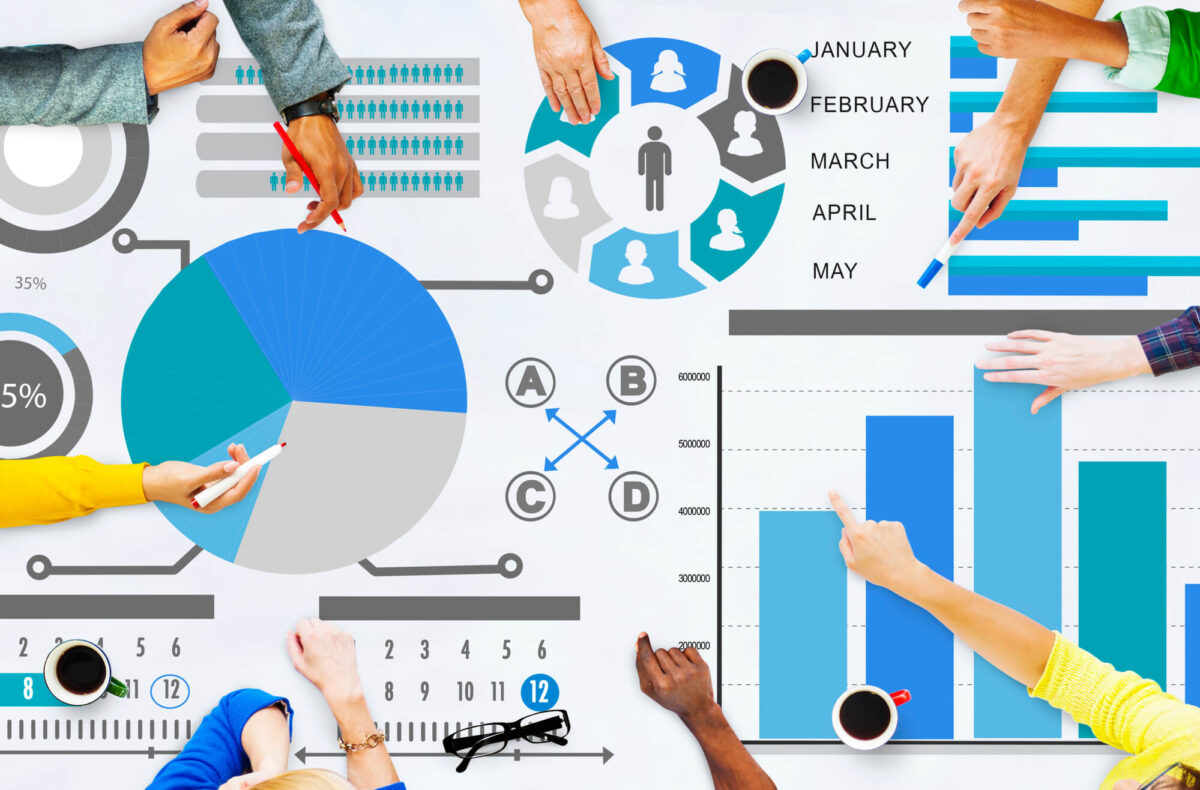DEFINING YOUR TERMS: WHAT IS A CRM?
CRM is short for Constituent Relationship Management. A CRM is software that allows you to record, track, and report on information about your relationships with supporters. Sometimes it’s also referred to as a database or called donor management software. A good nonprofit CRM can be vital to your organization’s overall fundraising and engagement strategy.
MOVING FROM THE SPREADSHEET STRATEGY TO A CRM SOLUTION
While you might not have a CRM yet, your nonprofit is probably using some combination of tools to track information about your donors, donations, and supporter activity. Many nonprofits start with a collection of spreadsheets. And recording this information in an organized way is critical to building strong relationships!
But there are limitations to what we’ll call “The Spreadsheet Strategy.” For starters, someone has to manually enter all of the information, which can take up a lot of time. The more information you collect, the harder it becomes to organize and share it. With multiple contributors and spreadsheets, getting the insights you need can quickly become a difficult business.
A nonprofit CRM provides a great solution because it gives you a centralized way to collect and access your important data and can even automate some of the data entry. There are a number of different CRMs on the market today that handle various aspects of nonprofit management, including:
- Fundraising
- Donor/supporter/staff relationship management
- Donation processing and management
- Grant management
- Membership
- Advocacy
- Volunteering
- Program management
Some CRMs are built specifically to help you manage relationships with volunteers but don’t handle donor management or other functions. Others are capable of tracking donation and donor data alone. Then there are solutions to help you manage all of these engagements, generally through integrations with other programs or using all-in-one technology.
CHOOSING THE RIGHT CRM FOR YOUR NONPROFIT
With so many options available, it’s helpful to learn first-hand from others in the industry how to make the best decision. So we spoke with Raquel Stratton who has worked for a number of years as the Communications and Development Manager for small and medium-sized Bay Area nonprofits. Raquel led a year-long selection process to find the right CRM for her last organization and is currently undertaking the process again at a new nonprofit.
A self-proclaimed creative type, she still, “love[s] geeking out over a database.” From her perspective, “it’s invigorating when I can go look at data and see trends. I love looking at donor history. I think there’s something exciting about that. And the easier it is to pull and understand data, the more others get excited about it, too.”
We asked Raquel what she wished she knew before she started looking for a CRM. Her answer echoed a sentiment shared by other industry experts: “I wish I would’ve known that I wouldn’t find one solution that would solve all of our problems.”
SETTING EXPECTATIONS: WHAT’s Possible with a crm?
While a CRM is a powerful tool and resource, it’s important to set your expectations before making any major decisions.
What a nonprofit CRM can’t do:
- Run on its own without any oversight
- Make up for incomplete information or gaps in your data
- Fix broken internal processes
- Accommodate quickly changing internal systems for data collection
- Provide a one-size-fits-all solution
What a nonprofit CRM can do:
- Allow multiple collaborators to access and update information within a single system
- Aggregate data for communications and accounting needs
- Give you insights about supporter behavior over time
- Simplify your list segmentation process for improved communications and fundraising
- Create continuity among changing staff
- Save you time on data entry and reporting so you can focus on other more important things
- Make it easier to scale your existing programs and processes
With these things in mind, Raquel emphasized that, “there are lots of [CRM] options. Based on your [nonprofit’s] size and budget, there is something out there for you.” She suggested that nonprofits do their homework and research the options available, including the price for each CRM.
THERE’S NO SUCH THING AS A FREE CRM (OR: THE FREE PUPPY DILEMMA)
When you start your research, you’ll quickly learn that some nonprofit CRMs are available for “free.” We mention this specifically because we know when you’re working with limited resources, the offer sounds great at first!
But we want to challenge the myth of a truly free solution.
At the Nonprofit Technology Conference (NTC) this year, fundraising and nonprofit tech expert Robert Weiner put it in these terms: there’s free like a beer and then there’s free like a puppy. These are two very different things, and CRMs are like the latter.
While taking home a free puppy is adorable and exciting, it’s the beginning of a long-term relationship that requires ongoing attention and resources. Raquel agreed that selecting and successfully implementing a new CRM is no different.
While we all wish it were as easy as chugging down a cold beer, the process requires an investment of time and resources, as well as buy-in from your staff, leadership, and volunteers. And even after you choose a CRM, you’ll need to teach everyone to use it.
SELECTING A CRM: SETTING YOURself UP FOR SUCCESS
Since selecting and implementing a CRM is a real investment, Raquel shared some helpful tips on how to approach the process:
- Define what you want from the beginning and involve all of your stakeholders in the process.
Talk with everyone who will use the system and make a list or map of everything that you want from a CRM as far as functionality. Find ways to engage board members and any other external fundraisers. Really understand what your final goals and outcomes when it comes to having a new CRM. You’ll want to think about long-term organizational goals; not only where your organization is today, but where you plan to be in the future.
2. Determine your “must-haves” and “nice-to-haves.”
Raquel spoke candidly about the nature of CRMs – it’s unlikely that you will find the perfect one to fit all of your needs. Since that’s the case, there are probably areas where you’re willing to compromise and others where you’re not. But if you don’t define what you want, you will struggle to find a meaningful solution. Raquel’s organization knew that they wanted peer-to-peer capabilities and she needed something that was visually simple to understand. Her boss wanted a dashboard to display the data. Since they planned to use their CRM primarily for fundraising and donor cultivation, they compromised when it came to program management and volunteer tracking capabilities.
3. Consider the current state of your data.
Messy data is a challenge! Before you migrate to a new system, you might have to pay to clean up your existing data. You’ll want to factor this cost into the price of your CRM solution. You can also save money by cleaning it up yourself.
4. Be prepared to make an investment.
It might not be what you want to hear, but sometimes you have to spend time and money to get results. You have to invest in your data management system. If you don’t put any money into it, it’s going to come with other costs in terms of staff time and loss of potential efficiency.
A final piece of HELPFUL advice
Because a good CRM can be vital to your organization’s growth but requires an investment of resources to implement and maintain, you can take advantage of capacity building grants offered by some grantmakers and foundations. Raquel’s organization was able to secure a capacity building grant that allowed them to hire an individual to oversee the process from start to finish. If you decide to apply to one of these grants and would like some guidance, check out our post on Essential Grantwriting Tips for Your Nonprofit.
Move beyond spreadsheets. Avoid the “free puppy” dilemma. Take the time to research, plan, and engage stakeholders across your organization, and you’ll be ready to take advantage of what nonprofit CRM technology has to offer.
Raquel Stratton has over 10 years experience working in the nonprofit sector. She is currently the Development and Communications Manager at Global Healing, a nonprofit dedicated to ensuring that all children and mothers have access to quality healthcare. Previously, she worked with Beyond Emancipation, an organization providing critically-needed support programs and services to over 900 Alameda County foster youth each year. Her passion is helping others be who they dream to be.
Do you have advice for choosing the right nonprofit CRM? We’d love to hear what you think!






Shulamit
July 3, 2018But where do you find listings and reviews of the various CRM’s on the market?
Darya Gorlova
July 5, 2018Hi Shulamit,
Great question! Currently, the most popular nonprofit CRMs are Neon, Salsa, DonorPerfect, CiviCRM, and Kindful. As for a good place to start your research the other platforms, https://www.softwareadvice.com/nonprofit/crm-software-comparison/
Also, Flipcause just released a brand new CRM – it’s still in Beta, so you won’t find it listed on any of the other CRM comparison sites quite yet. You can get more info on Flipcause CRM here – https://www.flipcause.com/crm
Let us know how it goes! And don’t hesitate to ask if you have any other questions!
Ali Oligny
July 9, 2018That’s great advice, Darya!
I’d also suggest:
1. Capterra for Fundraising Software Reviews, or
2. G2 Crowd for Best Nonprofit CRM Software
Idealware also released an in-depth study if you’d like to read about your options. These sites should prove useful – please let us know how your search goes, Shulamit!
Vishal Bhatia
July 18, 2018Choose the different CRM Development process because everyone’s processes are different and that is not a bad thing. This thing differentiates you from your competitors. And It is very important that your CRM is flexible enough to handle your processes.